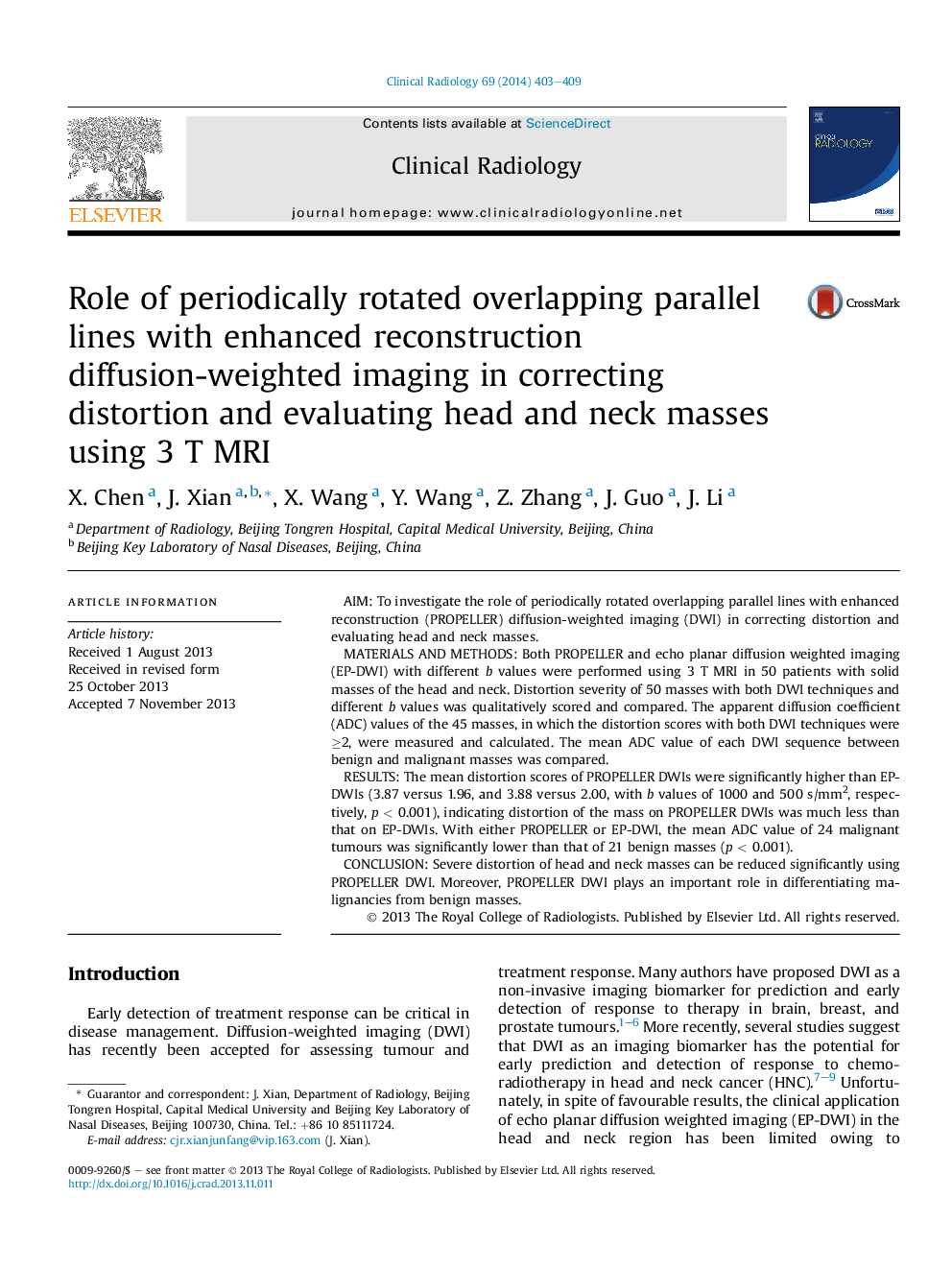| Article ID | Journal | Published Year | Pages | File Type |
|---|---|---|---|---|
| 3981630 | Clinical Radiology | 2014 | 7 Pages |
AimTo investigate the role of periodically rotated overlapping parallel lines with enhanced reconstruction (PROPELLER) diffusion-weighted imaging (DWI) in correcting distortion and evaluating head and neck masses.Materials and methodsBoth PROPELLER and echo planar diffusion weighted imaging (EP-DWI) with different b values were performed using 3 T MRI in 50 patients with solid masses of the head and neck. Distortion severity of 50 masses with both DWI techniques and different b values was qualitatively scored and compared. The apparent diffusion coefficient (ADC) values of the 45 masses, in which the distortion scores with both DWI techniques were ≥2, were measured and calculated. The mean ADC value of each DWI sequence between benign and malignant masses was compared.ResultsThe mean distortion scores of PROPELLER DWIs were significantly higher than EP-DWIs (3.87 versus 1.96, and 3.88 versus 2.00, with b values of 1000 and 500 s/mm2, respectively, p < 0.001), indicating distortion of the mass on PROPELLER DWIs was much less than that on EP-DWIs. With either PROPELLER or EP-DWI, the mean ADC value of 24 malignant tumours was significantly lower than that of 21 benign masses (p < 0.001).ConclusionSevere distortion of head and neck masses can be reduced significantly using PROPELLER DWI. Moreover, PROPELLER DWI plays an important role in differentiating malignancies from benign masses.
